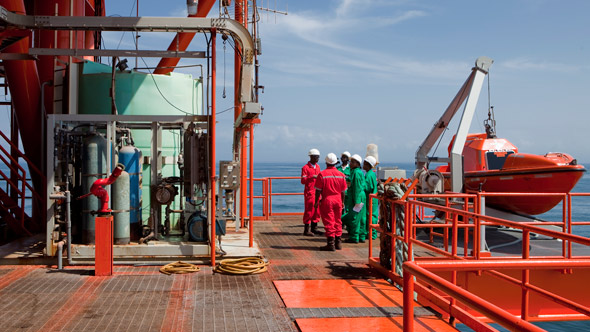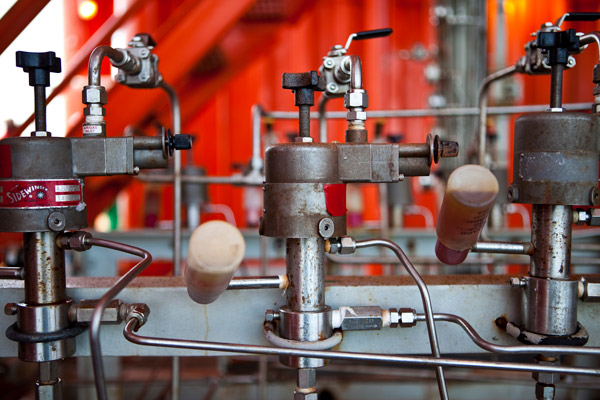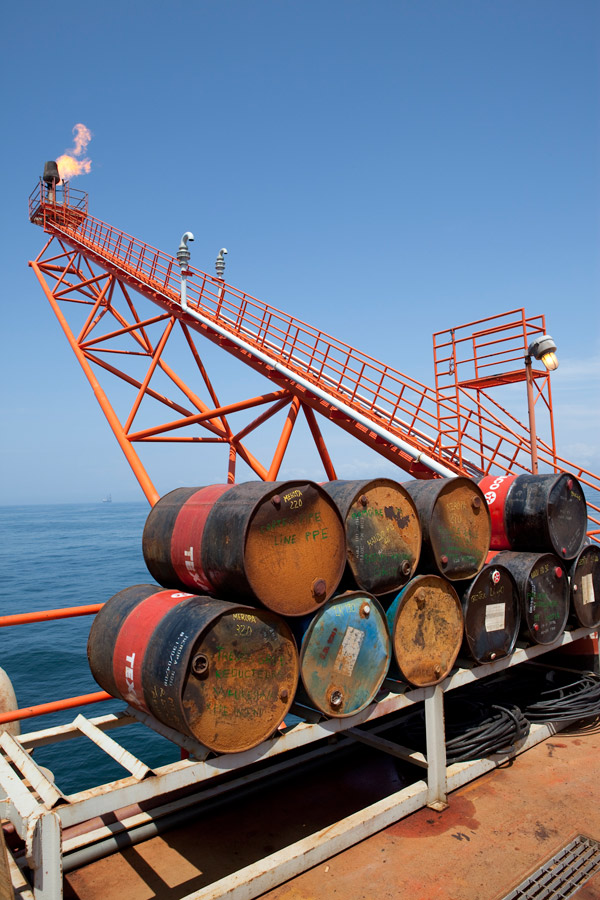Oil and Gas in Côte d’Ivoire: Analysis of Oil and Gas Sector
It is expected that the Gulf of Guinea will supply about a quarter of all US oil by 2015.

Oil and Gas in Côte d’Ivoire: Analysis of Oil and Gas Sector
It is expected that the Gulf of Guinea will supply about a quarter of all US oil by 2015.
The oil and gas sector not only plays an increasingly important role in the economy of Côte d’Ivoire, but is also acquiring a strategic role in international oil and gas markets. Côte d’Ivoire is estimated to have recoverable oil reserves of 100 million barrels and gas reserves of 1.1 trillion cubic feet. In addition, there has been a wave of new exploration resulting in major finds. The upstream oil and gas sector constitues the major part in the overall oil and gas industry in the country.
The upstream is dominated by the National Oil Company, Petroci. Petroci’s role currently includes the development and maintainance of the main database on Côte d’Ivoire’s oil assets, and the assumption of minority participation – generally between 5% and 15% – in the offshore ventures operated by international companies.
The downstream oil and gas sector is represented by the refinery with an adjacent bitumen plant and several distribution companies. The refinery; Ivorian Company of Refining (SIR) located in Abidjan is an advanced refinery, which has two atmospheric distillation units of traditional and one of two hydrocrackers in Africa and has a processing capacity of 3,000,000 barrels per year. SIR supplies most of the needs of the local market and exports the remaining part of the production internationally.
The oil for SIR is imported from Nigeria. A new pipeline from Cameoun is planned. The sector is not liberlized yet and the state holds major stakes in both Petroci and SIR. Both are scheduled for privatization.
Côte d’Ivoire current needs in petroleum products are 1,000,000 tons per year. However, since 2002, sales growth in this market experienced a sharp decline due to negative economic growth. There are numerous downstream oil and gas distribution companies. Aside from the multinational chains there are local private oil and gas distribution companies such as Petro Ivoire that will are poised to grow in the future.
|
loading the player….
|
The Growing Importance of the Gulf of Guinea
Côte d’Ivoire is the westernmost of eleven nations bordering the recently identified oil-rich deposits underlying the Gulf of Guinea in the south Atlantic ocean below the Bulge of Africa and along the continent’s eastern coast. These eleven nations (Côte d’Ivoire, Ghana, Togo, Benin, and Nigeria along the north coast; and Cameroun, Gabon, Equatorial Guinea, Congo, Gabon, and Angola along the east coast) currently produce more than 3 million barrels per day (bpd), about 4% of the global total—most of which goes to Europe and America. 
Presently, while less than 2% of the Gulf has been explored, approximately 20% of Côte d’Ivoire’s seabed has been explored, and identification of new undersea deposits is proceeding rapidly with corresponding production increases anticipated. The Gulf of Guinea produces a light, sweet grade of crude oil that North American refineries prefer. It is expected that the Gulf of Guinea will supply about a quarter of all US oil by 2015.
While Côte d’Ivoire’s current oil production is relatively small—at 35,000 bpd, constituting less than 1.2% of the Gulf of Guinea’s total production—this is expected to rise more than five-fold, to more than 200,000 bpd in a few years.
According to Daniel Gnangni, Director General of Petroci, one of the major oil companies of Côte d’Ivoire, “Our strategic objective is to grow production. Petroci aims in the short to medium horizon to produce about 200,000 barrels of oil per day and 300 million cubic of gas. It is obvious that when we reach these levels of production, oil sector will play an important role in Côte d’Ivoire.”
In addition, Petroci plans to increase its production of natural gas from 130 million cubic feet to 300 million cubic feet.
The sedimentary basin of the Gulf allotted to Côte d’Ivoire is divided into 44 blocks, of which 19 are subject to production sharing contracts, while 25 are free and available to oil companies interested in exploration activities. What is needed are companies to invest or partner with that are technically and financially able undertake such deep water exploration. The people at Petroci, says Gnangni,
“are willing to accommodate them and put at their disposal all the available data to enable them to form their own opinion about the way they want to conduct oil exploration in the basin.”
It has also been announced that France’s Total, S.A., one of the six “supermajor” oil companies in the world, has just recently signed production sharing agreements for three new ultra-deep licenses off Côte d’Ivoire, permitting Total engineers to explore 3,200 square kilometers of ocean floor at depths of 2,000 to 3,000 meters.
Côte d’Ivoire/Ghana Boundary Dispute
One source of friction in Gulf of Guinea oil exploration is the exact location of the oceanic boundary between Côte d’Ivoire and Ghana. In March 2010, barely a week after Russian oil producer LUKOil under a license from Ghana announced it had discovered oil in the Dzata-1 well in the Cape Three Point, Côte d’Ivoire laid claim to the location where the oil was found.
Since then, Ghana has tasked its Lands and National Resources Ministry to coordinate activities of the Ghana Boundary Commission to scale the outer limits of Ghana’s continental shelf beyond the acceptable 200 nautical miles of the United Nations Commission’s limit. Every effort is being made by both nations to resolve the issue through negotiations or arbitration and use of foreign relations. Côte d’Ivoire has petitioned the United Nations to demarcate the Ivorian territorial maritime boundary with Ghana.